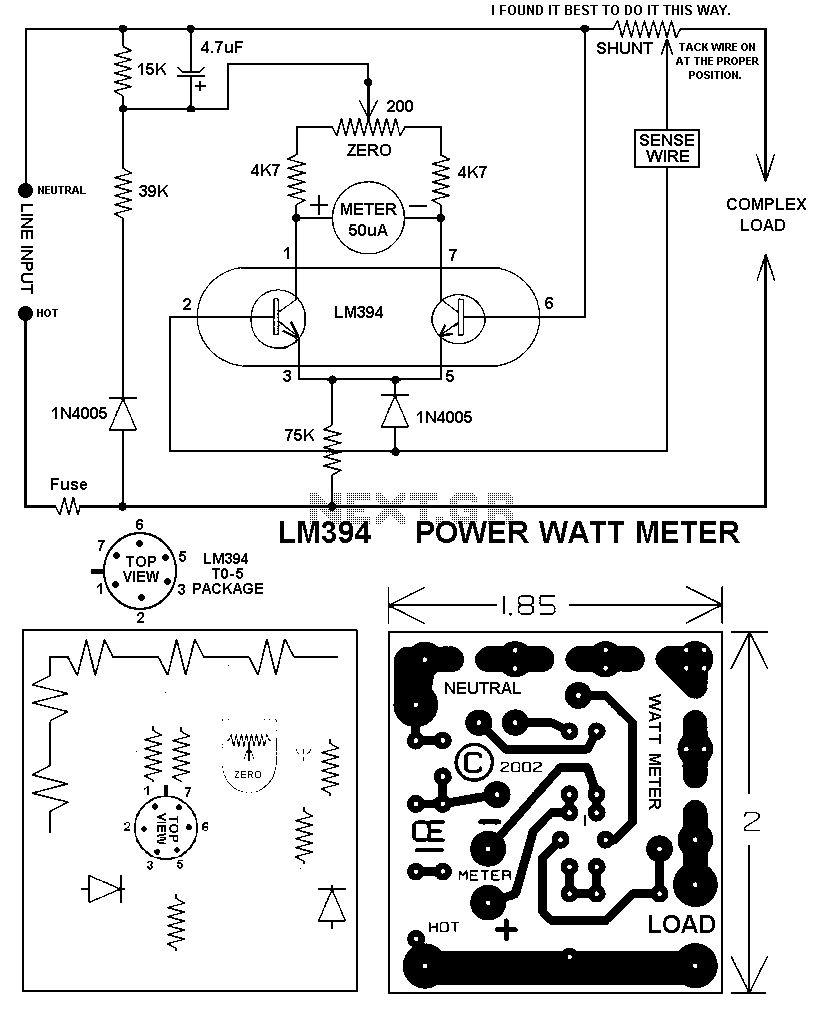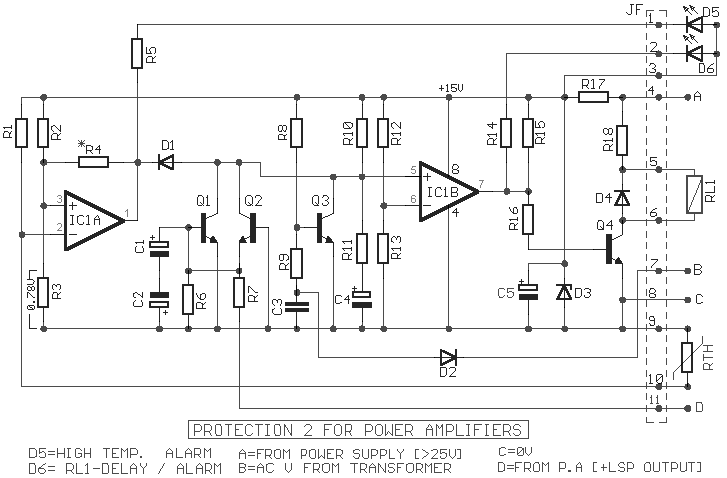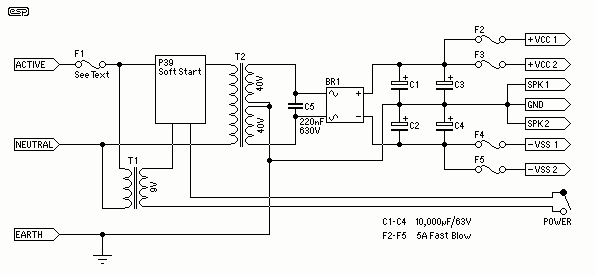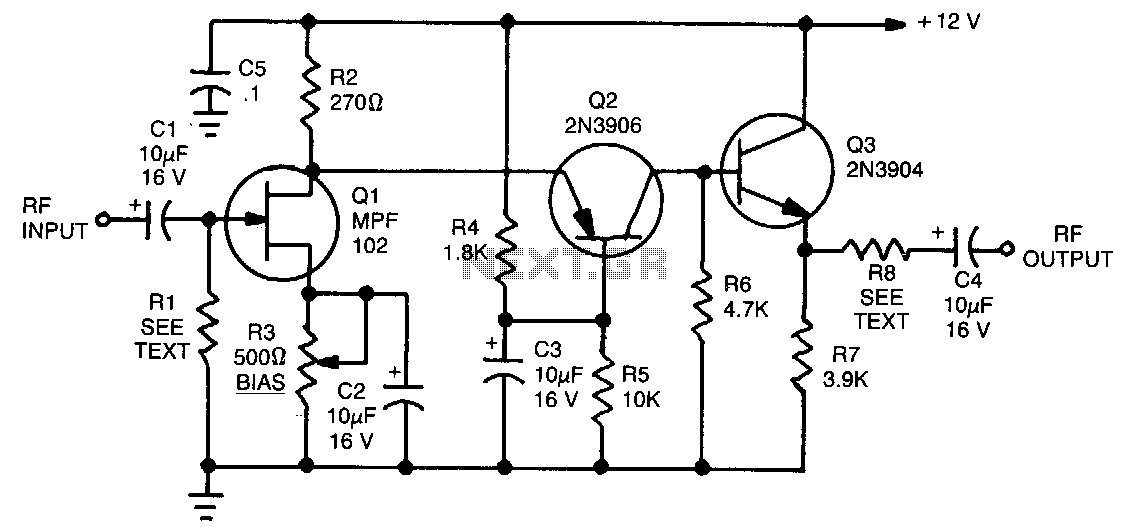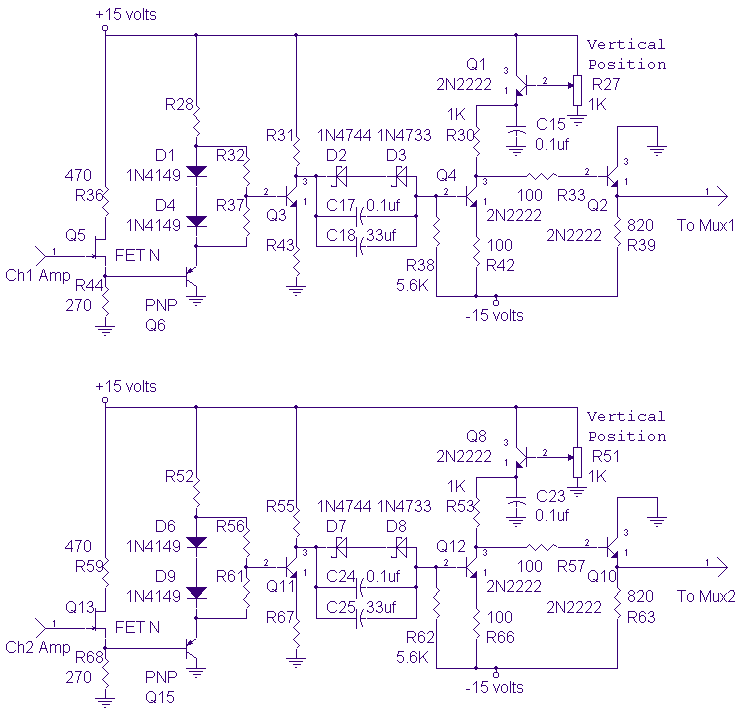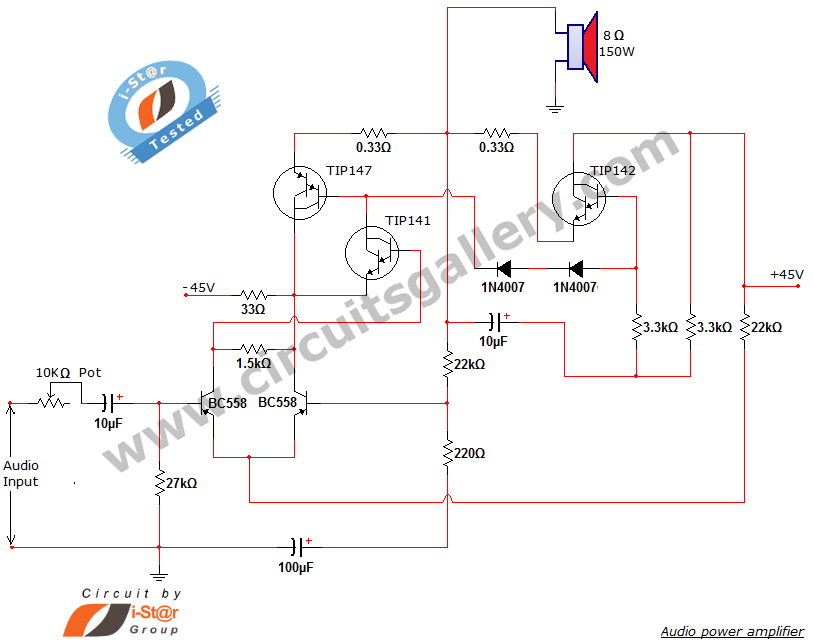
10 Watt Guitar Amplifier
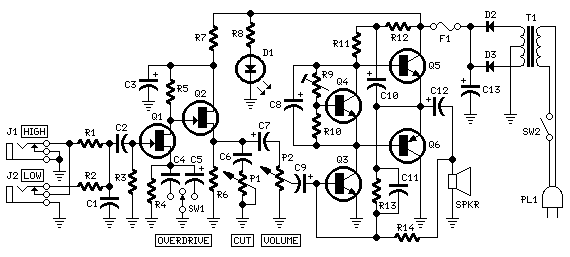
The aim of this design is to reproduce a Combo amplifier of the type very common in the sixties and the seventies of the past century. It is well suited as a guitar amplifier but it will do a good job with any kind of electronic musical instrument or microphone. 5W power output was a common feature of these widespread devices due to the general adoption of a class A single-tube output stage (see the Vox AC-4 model). Furthermore, nowadays we can do without the old-fashioned Vib-Trem feature frequently included in those designs. The present circuit can deliver 10W of output power when driving an 8 Ohm load, or about 18W @ 4 Ohm. More: It also features a two-FET preamplifier, two inputs with different sensitivity, a treble-cut control and an optional switch allowing overdrive or powerful treble-enhancement. Technical data are quite impressive for so simple a design: Sensitivity: 30m
The described Combo amplifier circuit is a modern adaptation of vintage designs, specifically tailored for versatility in musical applications. The amplifier's output stage employs a class A configuration, which is renowned for its linearity and warm sound characteristics, making it ideal for guitar amplification. The circuit can deliver a power output of 10W into an 8 Ohm load, and up to 18W when connected to a 4 Ohm load, providing sufficient power for small live performances and practice sessions.
At the heart of the amplifier is a two-FET preamplifier stage. This configuration enhances signal fidelity and allows for a broader dynamic range, accommodating various input sources such as electric guitars and microphones. The inclusion of two inputs with differing sensitivity levels enables the amplifier to cater to a variety of instruments and performance styles, ensuring optimal sound capture regardless of the source.
The circuit design also integrates a treble-cut control, which allows users to adjust the high-frequency response of the amplifier. This feature is particularly useful for shaping the tone, enabling musicians to achieve a desired sound profile by reducing harshness or enhancing clarity, depending on the instrument being played.
An optional switch for overdrive and treble enhancement adds further flexibility, allowing for creative sound manipulation. This feature can produce a richer, more dynamic sound, suitable for genres that require a more aggressive tone or for creating unique sound effects.
Overall, the technical specifications of this Combo amplifier design highlight its impressive capabilities, especially considering its simplicity. The sensitivity rating of 30m indicates a responsive design, ensuring that even subtle nuances in performance are captured effectively. This amplifier serves as a reliable tool for musicians seeking both classic and contemporary sound qualities in their performances.The aim of this design is to reproduce a Combo amplifier of the type very common in the `sixties and the `seventies of the past century. It is well suited as a guitar amplifier but it will do a good job with any kind of electronic musical instrument or microphone.
5W power output was a common feature of these widespread devices due to the general adoption of a class A single-tube output stage (see the Vox AC-4 model). Furthermore, nowadays we can do without the old-fashioned Vib-Trem feature frequently included in those designs.
The present circuit can deliver 10W of output power when driving an 8 Ohm load, or about 18W @ 4 Ohm. It also features a two-FET preamplifier, two inputs with different sensitivity, a treble-cut control and an optional switch allowing overdrive or powerful treble-enhancement. Technical data are quite impressive for so simple a design: Sensitivity: 30m 🔗 External reference
The described Combo amplifier circuit is a modern adaptation of vintage designs, specifically tailored for versatility in musical applications. The amplifier's output stage employs a class A configuration, which is renowned for its linearity and warm sound characteristics, making it ideal for guitar amplification. The circuit can deliver a power output of 10W into an 8 Ohm load, and up to 18W when connected to a 4 Ohm load, providing sufficient power for small live performances and practice sessions.
At the heart of the amplifier is a two-FET preamplifier stage. This configuration enhances signal fidelity and allows for a broader dynamic range, accommodating various input sources such as electric guitars and microphones. The inclusion of two inputs with differing sensitivity levels enables the amplifier to cater to a variety of instruments and performance styles, ensuring optimal sound capture regardless of the source.
The circuit design also integrates a treble-cut control, which allows users to adjust the high-frequency response of the amplifier. This feature is particularly useful for shaping the tone, enabling musicians to achieve a desired sound profile by reducing harshness or enhancing clarity, depending on the instrument being played.
An optional switch for overdrive and treble enhancement adds further flexibility, allowing for creative sound manipulation. This feature can produce a richer, more dynamic sound, suitable for genres that require a more aggressive tone or for creating unique sound effects.
Overall, the technical specifications of this Combo amplifier design highlight its impressive capabilities, especially considering its simplicity. The sensitivity rating of 30m indicates a responsive design, ensuring that even subtle nuances in performance are captured effectively. This amplifier serves as a reliable tool for musicians seeking both classic and contemporary sound qualities in their performances.The aim of this design is to reproduce a Combo amplifier of the type very common in the `sixties and the `seventies of the past century. It is well suited as a guitar amplifier but it will do a good job with any kind of electronic musical instrument or microphone.
5W power output was a common feature of these widespread devices due to the general adoption of a class A single-tube output stage (see the Vox AC-4 model). Furthermore, nowadays we can do without the old-fashioned Vib-Trem feature frequently included in those designs.
The present circuit can deliver 10W of output power when driving an 8 Ohm load, or about 18W @ 4 Ohm. It also features a two-FET preamplifier, two inputs with different sensitivity, a treble-cut control and an optional switch allowing overdrive or powerful treble-enhancement. Technical data are quite impressive for so simple a design: Sensitivity: 30m 🔗 External reference
Warning: include(partials/cookie-banner.php): Failed to open stream: Permission denied in /var/www/html/nextgr/view-circuit.php on line 713
Warning: include(): Failed opening 'partials/cookie-banner.php' for inclusion (include_path='.:/usr/share/php') in /var/www/html/nextgr/view-circuit.php on line 713
